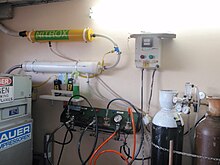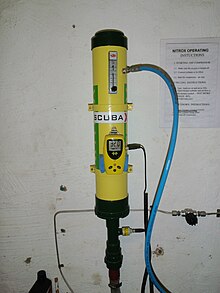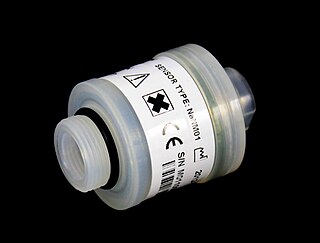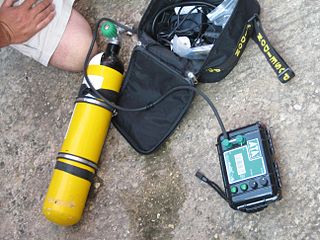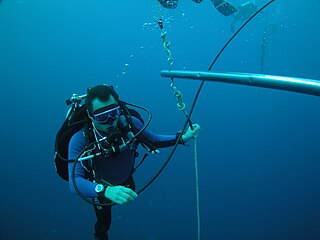Applications
Shielding gases for welding

Shielding gases are inert or semi-inert gases used in gas metal arc welding and gas tungsten arc welding to protect the weld area from oxygen and water vapour, which can reduce the quality of the weld or make the welding more difficult.
Gas metal arc welding (GMAW), or metal inert gas (MIG) welding, is a process that uses a continuous wire feed as a consumable electrode and an inert or semi-inert gas mixture to protect the weld from contamination. [1] Gas tungsten arc welding (GTAW), or tungsten inert gas (TIG) welding, is a manual welding process that uses a nonconsumable tungsten electrode, an inert or semi-inert gas mixture, and a separate filler material. [2]
Modified Atmosphere Packaging in the food industry
Modified atmosphere packaging preserves fresh produce to improve delivered quality of the product and extend its life. The gas composition used to pack food products depends on the product. A high oxygen content helps to retain the red colour of meat, while low oxygen reduces mould growth in bread and vegetables. [3]
Gas mixtures for brewing
- Sparging: An inert gas such as nitrogen is bubbled through the wine, which removes the dissolved oxygen. Carbon dioxide is also removed and to ensure that an appropriate amount of carbon dioxide remains, a mixture of nitrogen and carbon dioxide may be used for the sparging gas. [3]
- Purging and blanketing: The removal of oxygen from the headspace above the wine in a container by flushing with a similar gas mixture to that used for sparging is called purging, and if it is left there it is called blanketing or inerting. [3]
Breathing gas mixtures for diving
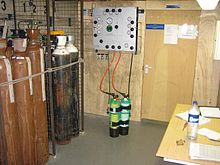
A breathing gas is a mixture of gaseous chemical elements and compounds used for respiration. The essential component for any breathing gas is a partial pressure of oxygen of between roughly 0.16 and 1.60 bar at the ambient pressure. The oxygen is usually the only metabolically active component unless the gas is an anaesthetic mixture. Some of the oxygen in the breathing gas is consumed by the metabolic processes, and the inert components are unchanged, and serve mainly to dilute the oxygen to an appropriate concentration, and are therefore also known as diluent gases.
Scuba diving
Gas blending for scuba diving is the filling of diving cylinders with non-air breathing gases such as nitrox, trimix and heliox. Use of these gases is generally intended to improve overall safety of the planned dive, by reducing the risk of decompression sickness and/or nitrogen narcosis, and may improve ease of breathing.
Surface supplied and saturation diving
Gas blending for surface supplied and saturation diving may include the filling of bulk storage cylinders and bailout cylinders with breathing gases, but it also involves the mixing of breathing gases at lower pressure which are supplied directly to the diver or to the hyperbaric life-support system. Part of the operation of the life-support system is the replenishment of oxygen used by the occupants, and removal of the carbon dioxide waste product by the gas conditioning unit. This entails monitoring of the composition of the chamber gas and periodic addition of oxygen to the chamber gas at the internal pressure of the chamber.
The gas mixing unit is part of the life support equipment of a saturation system, along with other components which may include bulk gas storage, compressors, helium recovery unit, bell and diver hot water supply, gas conditioning unit and emergency power supply [4]
Medical gas mixtures

The anesthetic machine is used to blend breathing gas for patients under anesthesia during surgery. The gas mixing and delivery system lets the anesthetist control oxygen fraction, nitrous oxide concentration and the concentration of volatile anesthetic agents. [5] The machine is usually supplied with oxygen (O2) and nitrous oxide (N2O) from low pressure lines and high pressure reserve cylinders, and the metered gas is mixed at ambient pressure, after which additional anesthetic agents may be added by a vaporizer, and the gas may be humidified. Air is used as a diluent to decrease oxygen concentration. In special cases other gases may also be added to the mixture. These may include carbon dioxide (CO2), used to stimulate respiration, and helium (He) to reduce resistance to flow or to enhance heat transfer. [6]
Gas mixing systems may be mechanical, using conventional rotameter banks, or electronic, using proportional solenoids or pulsed injectors, and control may be manual or automatic. [5]
Chemical production processes
Providing reactive gaseous materials for chemical production processes in the required ratio
Controlled atmosphere manufacture and storage
Protective gas mixtures may be used to exclude air or other gases from the surface of sensitive materials during processing. Examples include melting of reactive metals such as magnesium, and heat treatment of steels.
Customized gas mixtures for analytical applications
- Span gases are used for testing and calibrating gas detection equipment by exposing the sensor to a known concentration of a contaminant. The gases are used as a reference point to ensure correct readings after calibration and have very accurate composition, with a content of the gas to be detected close to the set value for the detector.
- Zero gas is normally a gas free of the component to be measured, and as similar as practicable to the composition of the gas to be monitored, used to calibrate the zero point of the sensor.
Calibration gas mixtures are generally produced in batches by gravimetric or volumetric methods.
The gravimetric method uses sensitive and accurately calibrated scales to weigh the amounts of gases added into the cylinder. Precise measurement is required as inaccuracy or impurities can result in incorrect calibration. The container for calibration gas must be as close to perfectly clean as practicable. The cylinders may be cleaned by purging with high purity nitrogen, the vacuumed. For particularly critical mixtures the cylinder may be heated while being vacuumed to facilitate removal of any impurities adhering to the walls. [7]
After filling, the gas mixture must be thoroughly mixed to ensure that all components are evenly distributed throughout the container to prevent possible variations on composition within the container. This is commonly done by rolling the container horizontally for 2 to 4 hours. [7]
